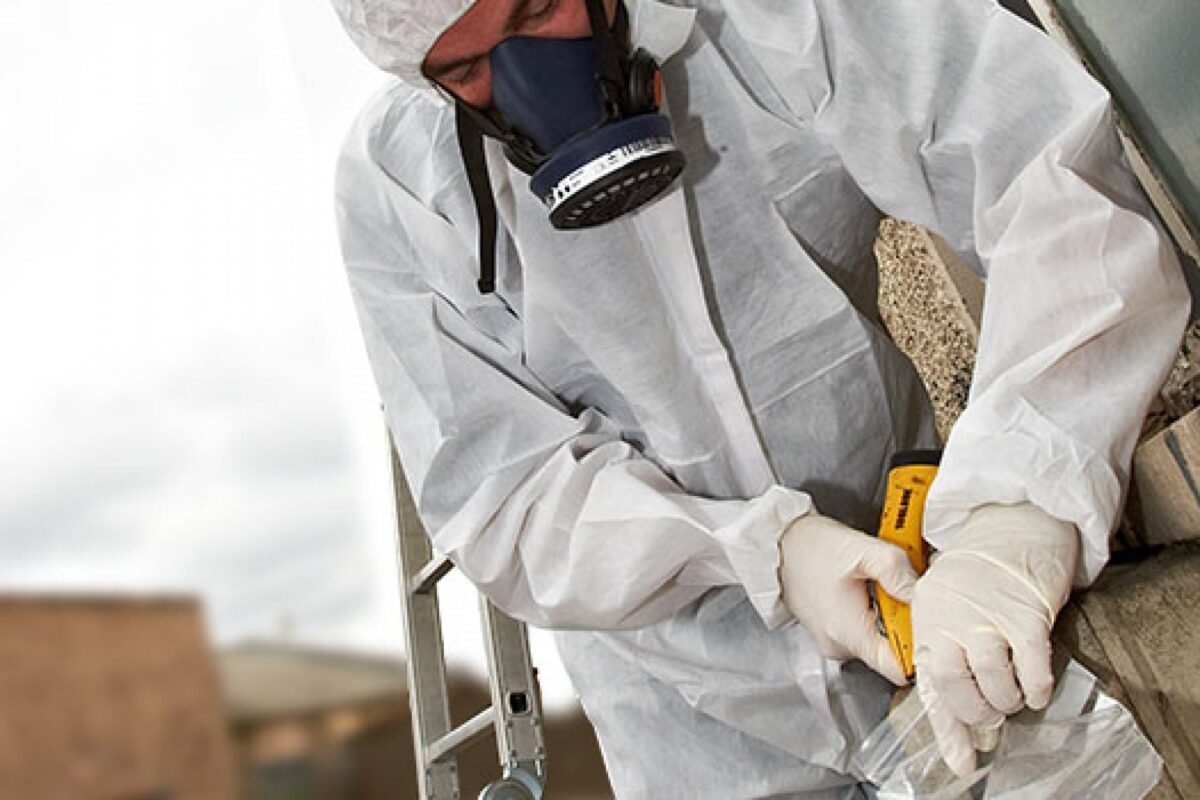WorkSafeBC requires a hazardous materials inspection for any work site to determine the presence of asbestos containing materials (ACM), and many municipalities now require a complete inventory of hazardous materials present in a building before issuing a permit to renovate or demolish the premises. Some of these hazardous materials are asbestos, lead (in paint, plumbing, stained glass), mercury (in thermostats and fluorescent light bulbs), PCBs (in fluorescent light ballasts) and ODSs (ozone depleting substances such as Freon, a refrigerant used in air conditioners).
All of these can be a danger, not only to people but to the environment as well. Proper precautions, including using personal protection equipment, such as respirators, Tyvek suits, and gloves, must be worn to protect workers and anyone else who could be exposed on the work site. Hazardous materials must be removed and disposed of in accordance with local, provincial and federal regulations.
What is Asbestos?
sbestos is a mineral fiber found in rocks, of naturally occurring silicate minerals that can be separated into fibers. There are several kinds of asbestos fibers, all of which are strong, durable, and resistant to heat and fire. They are also long, thin and flexible so that they can be woven into cloth. Because of the qualities, asbestos has been used in thousands of consumer, industrial, automotive, scientific and building products. Asbestos has been used in industrial sites, homes, schools, shipyards and commercial buildings since the twentieth Century. There are several types of asbestos fibers, of which three have been used for commercial applications:
- Chrysotile or white asbestos. It is white-gray in color and found in Serpentine rock. It comes mainly from Canada.
- Amosite or brown asbestos comes from Southern Africa.
- Crocidolite or blue asbestos comes from Southern Africa and Australia.
Is Asbestos Dangerous?
Asbestos has been shown to cause cancer of the lung and stomach according to studies of workers and others exposed to asbestos. There is no level of exposure to asbestos fibers that experts can assure is completely safe. Some asbestos materials can break into small fibers which can float in the air and can be inhaled. The tiny fibers are so small they cannot be seen with the naked eye. They can pass through the filters of normal vacuum cleaners and get back into the air. Once inhaled, asbestos fibers can become lodged in the lung tissue for a long time. After many years, cancer or mesothelioma can develop.
Asbestos has been shown to cause cancer of the lung and stomach according to studies of workers and others exposed to asbestos. There is no level of exposure to asbestos fibers that experts can assure is completely safe. Some asbestos materials can break into small fibers which can float in the air and can be inhaled. The tiny fibers are so small they cannot be seen with the naked eye. They can pass through the filters of normal vacuum cleaners and get back into the air. Once inhaled, asbestos fibers can become lodged in the lung tissue for a long time. After many years, cancer or mesothelioma can develop.
How Can You Tell if There is Asbestos in Your Home?
It can be difficult to tell whether your home has materials containing asbestos in it just by looking. As a general rule, if your house was built:
- Before the mid-1980s, it is highly likely that it would have materials containing asbestos.
- Between the mid-1980s and 1990, it is likely that it would have materials containing asbestos.
- After 1990, it is highly unlikely it would have materials containing asbestos.
If you are not sure that a material contains asbestos, play it safe and assume that it does.
What is Asbestos Sampling?
Asbestos sampling is the process of collecting suspect asbestos-containing materials for the purpose of testing them. Sampling areas where asbestos may reside in both homes and buildings include:
- Heating Ductwork and Furnaces – Ducts may be largely made of Asbestos. As it starts to break down, Asbestos fibers are blown into the home and can be inhaled. Also, your furnace may be lined with Asbestos, or sit on Asbestos padding.
- Plumbing – Pipes may be wrapped with Asbestos, especially if connected to radiators or other steam-producing elements.
- Electrical Wiring – Older tube wires may be covered with Asbestos.
- Fireplaces – Prior to 1978, artificial logs were manufactured using Asbestos.
- Crawlspaces or Basement Floors – Asbestos fibers can collect on the ground or floor below ductwork or piping.
- Walls & Ceilings – May contain blown-in insulation that contains Asbestos, especially those built prior to 1981.
- Flooring – Vinyl floor tiles may contain asbestos.
- Roofing and Siding – Older roof shingles may be made from asbestos mixed with cement or asphalt.
Asbestos is often difficult to identify. Material sampling is required to accurately determine if you have asbestos. Using advanced sampling techniques, BCHAZMAT Management’s experienced asbestos testing professionals will:
- Assess your home/building to establish if you have asbestos at your property.
- Take samples to determine the severity of your asbestos problem.
- Provide you with a laboratory report, also providing our own detailed report that explains the lab report in further detail, as well as outlining all of our notes and observations.


